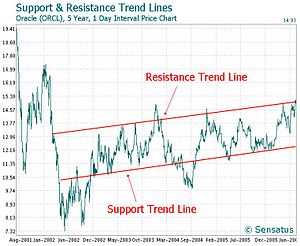Spiritual Science – The selfsimilarity of the Fibonacci sequence
The Bible says that God created “man in his image” and everything what he created was very good (perfect). All creation has God’s fingerprint and is self-similar, fractal in it’s nature.
I will try to explain with this post that everything in the universe is self-similar, from macro-cosmos to micro-cosmos, … even the mind, the spirit and consciousness is self-similar. Indeed the nature has fractal patterns because the very foundation of space-time is consciousness.

Beginning with the most bizarre numeric sequence, the Fibonacci number, this post will elaborate the self-similarity of this very special mathematical sequence.
The Fibonacci sequence was first well known in the ancient India, where it was applied to the metrical sciences (prosody). Prosody or poetry, a form of literary art, reflects this number sequence in it basic rhythmic structure.
First let’s consider the basics of Fibonacci, the biggest promoter of it in mathematics (Leonardo Pisano Bogollo) and it’s special properties.
Leonardo Pisano Bogollo, (c. 1170 – c. 1250) also known as Leonardo Fibonacci, or, most commonly, simply Fibonacci, was an Italian mathematician, considered by some “the most talented mathematician of the Middle Ages“.
In the Liber Abaci (1202), Fibonacci introduces the so-called modus Indorum (method of the Indians), today known as Arabic numerals (Sigler 2003; Grimm 1973). The book advocated numeration with the digits 0–9 and place value. The book showed the practical importance of the new numeral system, using lattice multiplication and Egyptian fractions, by applying it to commercial bookkeeping, conversion of weights and measures, the calculation of interest, money-changing, and other applications. The book was well received throughout educated Europe and had a profound impact on European thought.
Liber Abaci also posed, and solved, a problem involving the growth of a hypothetical population of rabbits based on idealized assumptions. The solution, generation by generation, was a sequence of numbers later known as Fibonacci numbers. The number sequence was known to Indian mathematicians as early as the 6th century, but it was Fibonacci’s Liber Abaci that introduced it to the West.
In mathematics, the Fibonacci numbers are the numbers in the following sequence:

By definition, the first two Fibonacci numbers are 0 and 1, and each remaining number is the sum of the previous two. Some sources omit the initial 0, instead beginning the sequence with two 1s.
In mathematical terms, the sequence Fn of Fibonacci numbers is defined by the recurrence relation  .
.
The relation of the Fibonacci sequence to the Golden Ratio
The ratio of each successive pair of numbers in the series approximates phi (1.618. . .) , as 5 divided by 3 is 1.666…, and 8 divided by 5 is 1.60.
The ratios of the successive numbers in the Fibonacci series quickly converge on Phi. After the 40th number in the series, the ratio is accurate to 15 decimal places.
1.618033988749895 . . .
What is Phi?
Phi (f = 1.618033988749895… ), most often pronounced fi like “fly,” is simply an irrational number like pi ( p = 3.14159265358979… ), but one with many unusual mathematical properties. Unlike pi, which is a transcendental number, phi is the solution to a quadratic equation.

See also Continued fraction - Wikipedia.
Phi is the basis for the Golden Section, Ratio or Mean
The ratio, or proportion, determined by Phi (1.618 …) was known to the Greeks as the “dividing a line in the extreme and mean ratio” and to Renaissance artists as the “Divine Proportion” It is also called the Golden Section, Golden Ratio and the Golden Mean.

The Fibonacci Spiral is a fractal and self-similar
The self-similarity of the Fibonacci sequence becomes to everyone evident when the sequence is plotted with square sizes.


The fractal pattern of the Fibonacci spiral is everywhere in nature
Beginning with the Huge Galaxies in the universe …

… to weather phenomenons on earth like hurricanes …

… tornados …

… or a water vortex …

… to the land snails …

Even in plasma physic scientist has discovered microscopic Fibonacci spirals. From the biggest to the smallest, really everything that works fine shows these patterns that the Fibonacci sequence delivers.
It ends not here. I could write hundreds of books on self-similarity of nature. Nature proofs a intelligent creator. Than more one study these patterns, than more new things come to the surface.
For example the blood in the heart is not pumped by pure muscle work, but the blood forms a imploding vortex. So the blood flows by this vortex in embryos even before the heart start to function. The vortex is initiated by a electromagnetic impulse. Life force builds imploding vortexes triggered by electric sparks.
And the Golden Ratio (Phi … 1,618 …) is also found everywhere in nature, in art, in physic, in biology, in chemistry, in music, in theology, in stock markets, in linguistic, in … you know what I mean … EVERYWHERE!
You look to a beautiful woman and you think “Wow, she is so beautiful!” … but only because her proportions are perfected by the Golden Ratio! You can also say to her “Baby, you are so 1,618 … ” … what a compliment (if she is a mathematician)!
The numeric sequence of Fibonacci is self-similar
Many recurrent patterns exist in the sequence. Beside Phi, that is a approximation between every number in Fibonacci, also 24 is a special pattern based on the checksum.
If you take the first 12 digits and add them to the second twelve digits and apply numeric reduction to the result, you find that they all have a value of 9.
| 1st 12 numbers |
| 2nd 12 numbers |
| Numeric reduction - Add rows 1 and 2 |
| Final numeric reduction - Add digits of result |
Source: goldennumber.net
See also the 89, 109 and the Fibonacci Series.
And why is the Fibonacci pattern evident even in consciousness?
The simple fact that we recognize the beauty in something only because of the Golden Number and we try to recreate it in art, music, painting, poesy and so on, demonstrate that the mind itself is self-similar.
“Everything he has made pretty in its time. Even time indefinite he has put in their heart, that mankind may never find out the work that the [true] God has made from the start to the finish.”
Ecclesiastes 3:11
The fractal patterns of consciousness emerge in economy too. For example in stock markets the number sequence of Fibonacci is used to predict the market movement.
Today nobody would claim that the movement changes in stocks are by poor chance! And the day will come when nobody would claim that the evident patterns in nature has their origin in pure chance. Only a intelligent conscious being abundant in dynamic energy could create a universe like this.
See also:


